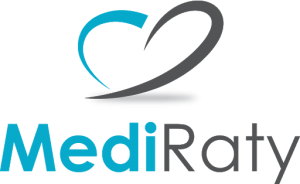Blepharoplasty
PricelistGENERAL INFORMATION
Blepharoplasty is a surgical correction of the lower or upper eyelids, involving the removal of excess skin along with excess orbital fatty tissue.
Blepharoplasty is performed under local anesthesia, on an outpatient basis. It usually lasts between one and three hours, depending on the extent of the surgery.
Why do patients undergo blepharoplasty?
The surgery, through removing the excess of flaccid skin and restoring proper skin tension, brings back a youthful and healthy appearance to the eye area, as well as ensures the proper contour and shape of the eyelids.
During blepharoplasty, we correct defects caused by excess skin and tissue flaccidity, which are responsible for the old and tired appearance of the eyes and the so-called bags under the eyes.
Blepharoplasty can be both a functional and cosmetic procedure. It can be motivated by ophthalmic reasons (e.g., limited field of vision due to the stretched fold of upper eyelid skin) or aesthetic reasons (e.g., visible eye fatigue, eyelid heaviness).
Blepharoplasty of the upper or lower eyelids is one of the most commonly performed surgical procedures on the face.
PRACTICAL INFORMATION
Before blepharoplasty it is necessary to undergo a pre-assessment at the Retina Ophthalmological Outpatient Clinic and Hospital. During the visit we will take your medical history, perform full ophthalmological exam and the necessary diagnostic tests.
What ailments are treated with blepharoplasty
Blepharoplasty allows to deal with many ailments, such as:
- ptosis – drooping of the upper eyelid
Ptosis can be congenital or acquired. It is one of the main symptoms of congenital or acquired oculomotor nerve palsy (inability to raise or lower the eyeball). It can signal a local or general muscle disease, such as muscular dystrophy, oropharyngeal muscular dystrophy, or other diseases such as myasthenia gravis or orbital tumour.
- entropion – inward turning of the lower eyelid
It involves inversion of the eyelid margin into the conjunctival sac.
Entropion is mostly associated with aging of the organ of sight. It is a result of atrophy of the tissues of the lower eyelid, especially the weakening of the muscles that open the eyelid. The eyelid becomes flaccid with age, and its ligaments have less tension, causing the orbicularis oculi muscle to convex.
Entropion can also be the result of burns, inflammation (e.g. trachoma), scarring after an eye trauma or an improperly performed surgical procedure.
As a result of inward turning of the lower eyelid, the eyelashes irritate the cornea, causing pain and redness, which can eventually lead to problems with vision.
- ectropion – outward turning of the lower eyelid
This condition causes the patient to experience irritation and redness of the eyeball, inflammation, pain and tearing. It usually affects elderly people.
Flaccid skin causes tearing, and increases the risk of conjunctivitis and corneal diseases. Ectropion correction involves restoring proper eyelid alignment and tension.
Indications for blepharoplasty
- medical: limited field of vision, headaches, eyelid fatigue and heaviness, upper eyelid muscle insufficiency,
- aesthetic: rejuvenation of appearance, removal of the signs of aging of the eye area, improving skin tension, and in consequence, better functioning of the eyelid muscles.
Contraindications to blepharoplasty
- on the day of the surgery, you should report to the Clinic wearing comfortable clothes (e,g. a tracksuit); you will be given a disposable patient bodysuit
- on the day of the surgery do not put on facial or eye makeup,
- prescribed chronic-use medications should be taken at the usual time, except the ones listed below,
- 3-7 days before the surgery patients should discontinue blood thinners, such as: Acard, Aspiryna, Aspro C, Asprocol, Polopiryna, Rhonal, Ring N, Solucytel, Thomapyrin, Pradaxa, Xarelto, Plavix, Warfin, Acenokumarol.
Prior to the scheduled surgery you will be provided with additional detailed information
Pre-operative recommendations
- w dniu zabiegu należy przyjechać w wygodnym ubraniu (np. dres), na miejscu w naszej placówce pacjent otrzymuje jednorazowe ubranie medyczne,
- w dniu operacji prosimy nie wykonywać makijażu twarzy ani oczu,
- stale przyjmowane leki należy przyjąć o zwykłej porze, z jednym wyjątkiem opisanym w kolejnym punkcie,
- na 3-7 dni przed operacją należy je odstawić leki rozrzedzające krew. Są to m.in.: Acard, Aspiryna, Aspro C, Asprocol, Polopiryna, Rhonal, Ring N, Solucytel, Thomapyrin, Pradaxa, Xarelto, Plavix, Warfin, Acenokumarol.
Dodatkowe, szczegółowe informacje przekażemy przed umówioną operacją.
Post-operative recommendations
- For several hours after the surgery the patient wears special dressings on the eyelids containing cold compresses.
- After the procedure the patient should not use public transport, and should be escorted home by an adult companion.
- For 24 hours after anesthesia the patient cannot drive, operate dangerous equipment or drink alcohol.
- After the surgery the face should not be immersed in water and the eye should be kept dry, as this can lead to infection. For 3 weeks caution should be exercised when bathing, until the wound becomes watertight.
- For 2-3 weeks after the surgery patients should abstain from doing work that requires a lot of physical effort (e.g., moving heavy furniture or lifting over 15 kilograms).
- On sunny days patients should wear sunglasses.
- After 7 days the patient should report to the clinic for removal of the stitches. Then next follow-up visits are scheduled.
- The skin of the eyelids should be taken care of properly, in accordance with the recommendations of the surgeon.
- After about 6 weeks the surgical wounds should have healed sufficiently, and the effect of eyelid skin tightening and a rejuvenated appearance slowly begins to be visible.
- Approximately 6 months after surgery, the full aesthetic effect is usually achieved.
- It should be remembered that the length of recovery and the healing time of the surgical wounds depends on the patient’s individual regenerative capacity.


